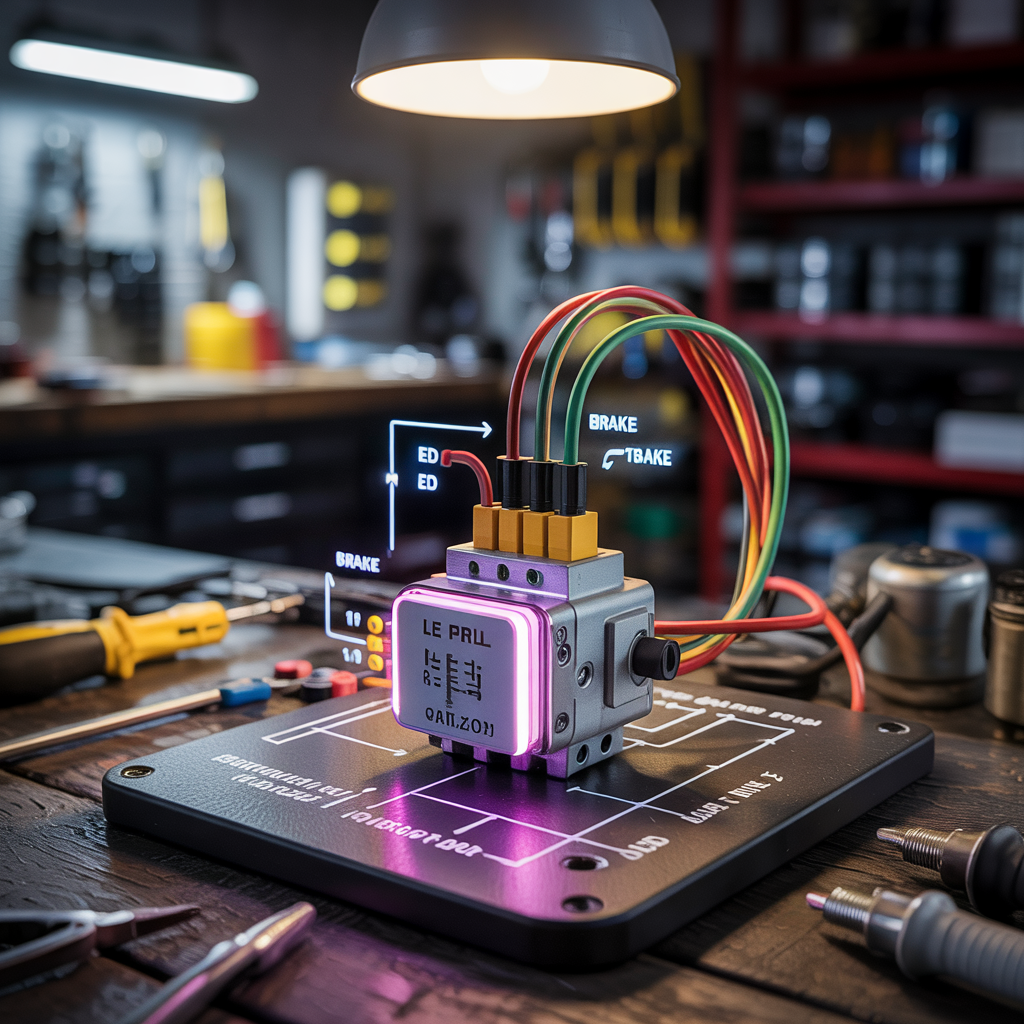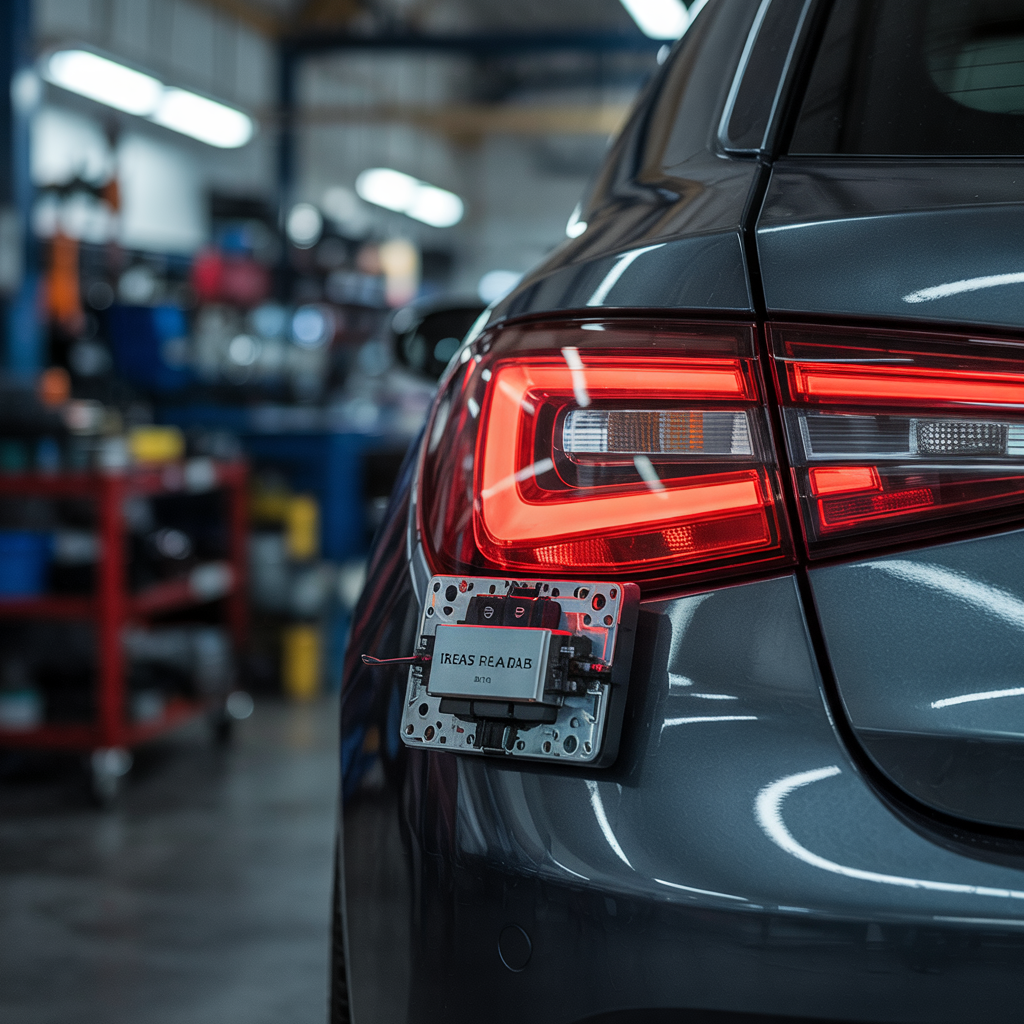Does the LED Flasher Relay Affect the Brake LED Light?
Does the LED flasher relay affect the brake LED light? No, the LED flasher relay does not affect the brake LED light. The flasher relay controls the turn signals and hazard lights, not the brake light circuit. Brake lights operate on a separate electrical path with their own switch, so changing the flasher relay won’t…
Does the LED flasher relay affect the brake LED light? No, the LED flasher relay does not affect the brake LED light. The flasher relay controls the turn signals and hazard lights, not the brake light circuit. Brake lights operate on a separate electrical path with their own switch, so changing the flasher relay won’t impact brake light function.
The flasher relay is a small electrical switch that controls the intermittent flashing of your turn signals and hazard lights. It’s essentially a timed switch that rapidly turns the circuit on and off. Older vehicles used electronic relays designed for
incandescent bulbs, which have a specific resistance. Modern vehicles, especially those with LED lighting, often require electronic flasher relays specifically designed for LED lights. These LED flasher relays often have a much lower power draw requirement than their incandescent counterparts. This difference in power consumption is a key factor in understanding their impact on brake lights.
Does the LED flasher relay affect the brake LED light?
How Does a Flasher Relay Work?

A typical flasher relay works using a bimetallic strip (for older, thermal relays) or an electronic circuit (for modern, electronic relays). When the circuit is closed (turn signal activated), the relay starts a timer. Once the time is up, the relay opens the circuit, turning the lights off. After another timed interval, the relay closes the circuit again, and the cycle repeats. The frequency of flashing is determined by the characteristics of the relay and the load (bulbs).
Read More: 12 Porch Ceiling Lighting Ideas That Add Warmth and Charm to Your Outdoor Space
LED Lighting in Vehicles
Why Use LED Brake Lights?
LED (Light Emitting Diode) brake lights are increasingly popular due to their numerous advantages. They consume less power than traditional incandescent bulbs, last much longer, are brighter, and react faster. This improved brightness and faster response time contribute to enhanced safety.
How LED Lights Differ from Incandescent Bulbs
The main difference lies in how they produce light. Incandescent bulbs produce light by heating a filament until it glows. LEDs, on the other hand, produce light by passing an electrical current through a semiconductor material. This fundamental difference affects the way they interact with electrical systems.
The Connection Between the Flasher Relay and Brake Lights

Direct vs. Indirect Relationship
The flasher relay’s primary function is to control the turn signals and hazard lights. It does not directly control the brake lights. However, an improperly functioning flasher relay—especially one not designed for LED lights—can indirectly affect brake light operation. This happens because of the load imbalance in the electrical system.
Load Imbalance and its Impact
Older flasher relays are designed for incandescent bulbs, which draw a significant amount of current. When replacing incandescent bulbs with LEDs, the load on the circuit is reduced significantly. This reduction in load can confuse the older flasher relay. In certain vehicles, this can lead to erratic brake light behavior, such as hyper-flashing, dim lights, or complete failure to illuminate.
Identifying Load-Related Issues
Symptoms of load imbalance include hyper-flashing of the turn signals (rapid, high-frequency flashing) alongside problems with brake lights. Sometimes the brake lights will fail to illuminate altogether, or function inconsistently.
Read More: Can I Use a 24W Adapted with a 12W LED Light? A Complete Guide
Troubleshooting Brake Light Issues
Checking the Bulbs
Before assuming the flasher relay is at fault, always check your brake light bulbs first. A burned-out or loose bulb is a common cause of brake light malfunction.
Inspecting the Wiring
Examine the wiring to the brake lights for any signs of damage, corrosion, or loose connections. A break in the wiring can prevent the brake lights from working correctly.
Testing the Flasher Relay
If the bulbs and wiring are okay, you can test the flasher relay. This often involves removing the relay and inspecting it for physical damage or using a multimeter to check its functionality.
Replacing the Flasher Relay
If the flasher relay is faulty, replace it with a new one. Make sure the replacement relay is specifically designed for LED lights. Using an incorrect relay will only exacerbate the problem.
Using a Load Resistor (For Specific Cases)
In some vehicles, adding a load resistor in parallel with the LED lights can provide sufficient load to prevent hyper-flashing. However, this is not always necessary and should be considered a last resort, as it adds extra heat and reduces efficiency.
Read More: How to Replace Fluorescent Light with LED? A Step By Step Guide
Choosing the Right Flasher Relay
Understanding Different Relay Types
Electronic flasher relays are preferred over thermal flasher relays for modern vehicles. They are more efficient and robust in handling variations in load caused by LED lights.
Identifying Specifications
When purchasing a new flasher relay, pay attention to its specifications. Ensure it’s compatible with your vehicle’s electrical system and is explicitly designed for LED lights. Incorrect relay specifications can worsen the problem.
Where to Buy a Flasher Relay
Flasher relays can be purchased at most auto parts stores, both online and in physical locations.
Preventing Future Issues
Regular Vehicle Maintenance
Regular maintenance checks, including inspection of the lights and electrical system, can help detect and prevent issues before they become major problems.
Choosing Quality LED Bulbs
Using high-quality LED bulbs that match the specified wattage and current draw for your vehicle will reduce the chances of electrical system incompatibility.
Understanding Your Vehicle’s Electrical System
A basic understanding of your vehicle’s electrical system can help you diagnose and address problems more effectively. Consulting your vehicle’s manual is a great first step.
Advanced Troubleshooting Techniques
Using a Multimeter
A multimeter is an invaluable tool for diagnosing electrical problems. It allows you to measure voltage, current, and resistance in different parts of the circuit.
Analyzing Circuit Diagrams
Your vehicle’s repair manual should contain circuit diagrams that illustrate the wiring and components in your car’s electrical system. Understanding these diagrams is crucial for advanced troubleshooting.
Seeking Professional Help
If you’re uncomfortable working with your vehicle’s electrical system, seeking professional help from a qualified mechanic is always the safest option.
Frequently Asked Questions
What is a hyperflash?
Hyperflash is rapid, high-frequency flashing of your turn signals. It usually indicates a low load on the circuit, often caused by switching from incandescent to LED bulbs without using a compatible flasher relay or load resistor.
Can I use any LED flasher relay?
No, not all LED flasher relays are created equal. Different vehicles have different electrical system requirements. You should choose a relay that is specifically designed for your car’s make, model, and year, and for LED lighting.
Why are my brake lights dimmer with LED bulbs?
Dim LED brake lights can be due to several reasons: a faulty bulb, loose wiring, incorrect voltage, or a problem in the electrical system. In some cases, the LED bulb’s wattage might not be sufficient for optimal brightness.
Why are my brake lights not working at all?
Brake lights that don’t work at all could be caused by a blown fuse, faulty wiring, problems with the brake light switch, a failed relay, or a problem within the car’s central electrical system.
Final Thoughts
Understanding the relationship between the LED flasher relay and your brake lights is crucial for maintaining your vehicle’s safety and functionality. While the flasher relay doesn’t directly control brake lights, an incompatible relay can indirectly cause malfunctions. By understanding the basics of your vehicle’s electrical system, performing regular checks, and selecting the right components, you can avoid many common issues and maintain properly functioning brake lights. If you experience persistent problems, don’t hesitate to consult your vehicle’s manual or seek professional help. Remember, properly functioning brake lights are vital for road safety, so addressing any concerns promptly is essential. Regularly check your bulbs and electrical connections for wear and tear and, if needed, replace your flasher relay with one explicitly designed for LED lighting.

